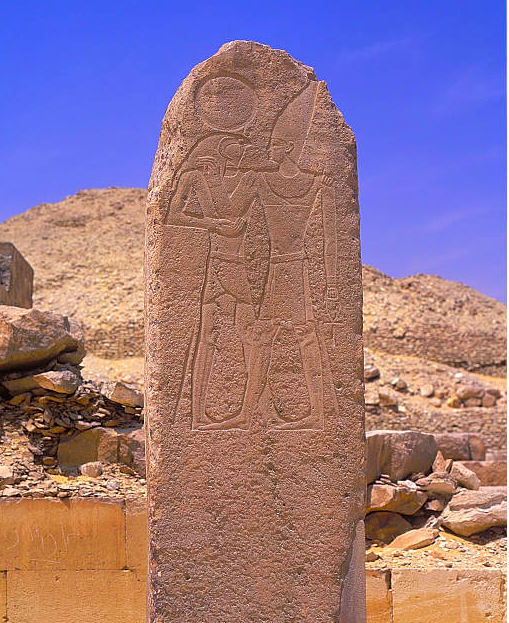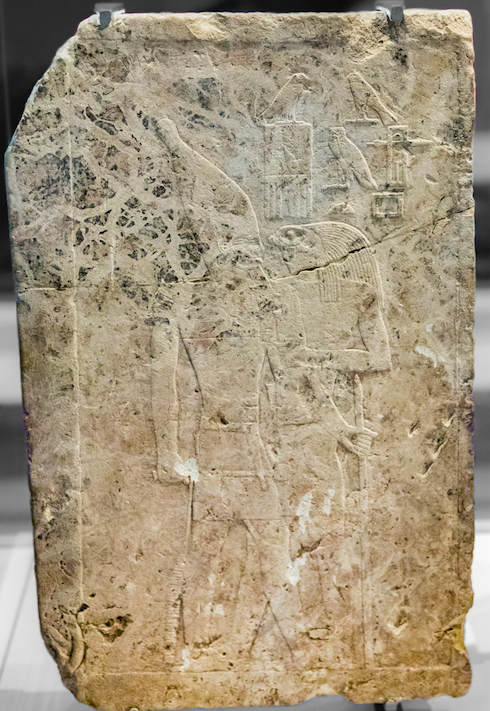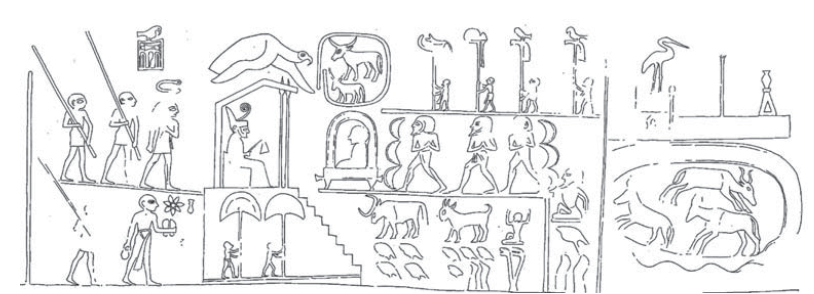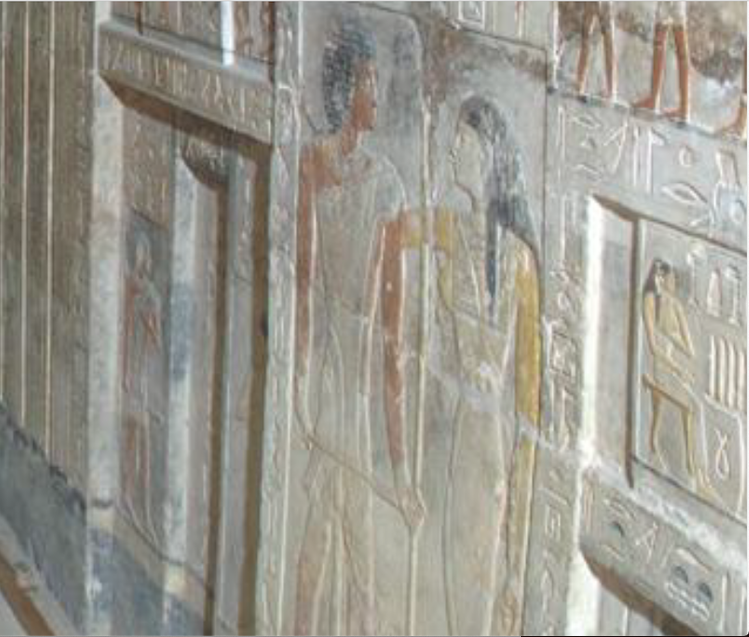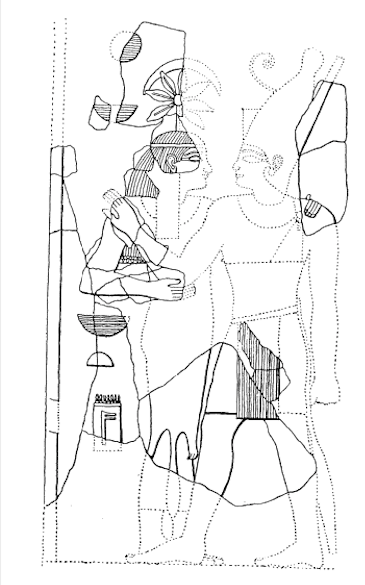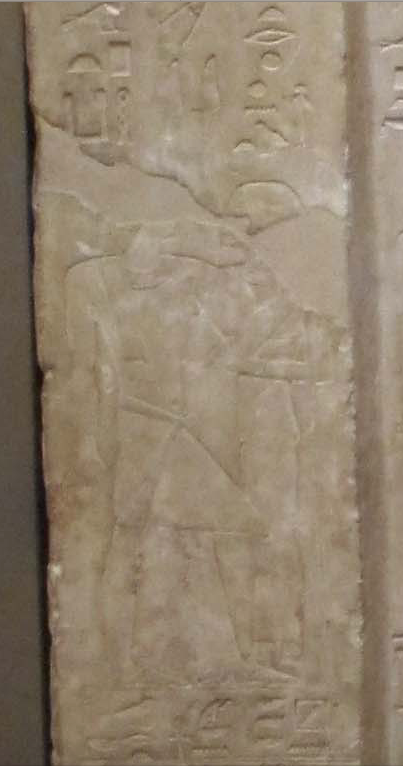The royal throne (III)
New interprétation about the royal throne whith faces of lions and bulls feet.
The formula TP 509 informs us about the throne 's symbolism.
The introduction of the formula is a présentation of the wife.
She is called the « sky, p.t » (cf. lower §1123a, the sky is defined as the imperishable stars (= the spitits akhou (PT 610)/the gods (PT 440)). The sky « speaks (mdw) ». This « sky's speech » (cf. also PT 440), this is also the « speech of Horus 'eye’ (jr.t fem. = wife) » (PT 422), and the « offfering, wdnt (= wife) 's voice » (TP 508) mentioned at the end of the introduction.
She is also called the « earth/country, t? » which « tremble, sd? », exactely as the « Ennead or the double Enneade trembles (sd?) » (PT 437, 610) et as the gods/servants of pharaoh are « head down » in front of him (cf. formula's end).
This earth/wife is represented by « Geb who quiver », and the « two districts of god (Geb) (sp?ty n?r) who roar (n?m?m) », i. e. « the two Enneads » (cf. formula's end PT 582) united to the god. Those two districts are symbolised by two lions quoted also infra in the formula as throne's ornament, this throne signifying then the two districts/egyptian people.
The two following sentences describe again the wife united to god, by mean of two other pictures : the wife is « the earth/country ploughed » « by the hoe, ?nn » (cf. PT 560, hoe, word homophone with the « pennis ?nn » cf. PT 317) i. e. by the pharaoh N/creator god.
In fact, the wife is called « the offering wdn.t (= wife) put before the pharaoh N/creator god ».
Then come three paragraphs each introduced by the same sentence signifying that the pharaoh/god N « could go out to the sky (p.t, wife/humanity) » (§1121), i. e. relive after the death to marry the sky (p.t, fem.).
These three paragraphs will develop how and why the creator god wanted to marry humanity.
The fisrt paragraph contains three images of this divine union preparing to understand the form and the function of the throne described in the third paragraph.
The pharaoh « crosses (??) the firmament bj? (= wife) », i.e., unites with the throne of iron (?nd bj?)/wife/field/people (cf. precedent page), throne mentionned infra (§1124a) and whose homophony with the word « firmament, bj? », indicates their symbolism's equivalence.
Then the pharaoh « comes across (n?m) the lake ?z?w (furieux) », i. e. unites with the two roaring districts, because the the first verb « n?m » recalled by paronomase the leonine roaring (nhmhm) of the two districts quoted supra ; and the second term ?z?w recalled by wordplay, the lions (m??zw) cited in the third paragraph concerning the throne with faces of lions (§1124b).
The paragraph ends with the image of « the overthrow » by the pharaoh N, « of Shu's ramparts », to show that N was a « great wild bull, sm? wr » mentioned in the third paragraph about throne's feet to show that the throne/people/wife, and the husband were one body.
The second paragraph is an deepening of this idea of couple's unity, which happened after the death and the recovery in life of N . Indeed, N is described as a « great bird, ?pd ?? » because his « entrails jmy-?t » purifyed by Anubis et embalmed as an Horus's service in Abydos, symbolised the children or the four Horus's sons/the gods/people forming the own body of Horus/N (cf. also TP 370). The embalmment/purification symbolised then the union of N with his people/gods/entrails/wife making one body with N who was the head.
The third and last paragraph is a new dévelopment about the meaning of the union de N with the sky defined as the imperishable stars. This union is conjugal because N is described in the next sentence, with his « sister » ( = wife), the star Sothis. This one with an other star ‘god of morning’ Horus, guide N to the « field of offerings, s?t ?tpt », other image of the wife/people, which recalls the métaphor of the « offering wdnt »/wife, in the introduction of the formula.
This « field of offering » is assimilated to the « iron throne » (=wife, supra), as indicated by the parallelism of the two sentences containing these terms (cf. also precedent page). Then, this throne is described with lions' faces and bull's feet, to show the complete osmosis between N (bull) and the two districts (lions) forming one body. But N was the head (= life/ka/ba (hence the scepter ?b?)) because the people of the sun ?nmm.t/wife is submitted, « head down »(§1126a).
N is indeed the spiritual life/ka of the body and that's why two times, N is said « in, m » (and not « among, mm », cf. 1123a) the two Enneads : N has been « found in the double Enneade » (§1127a), and N has been « enthroned as offering (wdn) in the double Enneade (1127c)». This last image shows that N/offering abased himself to become similar with his wife/offering wdnt/humanity, but to divinize her, to make her divine (sky) offering (earth)
TP 509
P/Cm/E 71 N/A/S B 3
§1120 The sky speaks (mdw pt)
the earth shakes (sd? t?),
§1120b Geb quiver (nmnm Gb),
the two god's districts are roaring (nhmhm sp?ty n?r),
§1120c the earth is ploughed (?bs t?),
The offrering is put down in front of (litt. on the arms) the N in life and enduring (sqr wdnt tp-?wy N pn ?n? ?d);
§1121a so that he goes out to the sky (pr=f rf jr pt),
comme across the firmament for the life and power (??=f bj? n ?n? w?s),
crosses the lake-?z?w (furious) (nhmj=f ?z?w), (=lion)
overthrows the Shu's ramparts (sšn znbt Šw), (=bull)
§1122a so that he goes out to the sky, pr=f rf jr pt
§1122b The tips of his wings being those of a great bird (tpt ?n?=f m ?pd ??);
§1122c His entrails have been washed by Anubis (j? jm-?t=f jn Jnpw),
§1122c The Horus' service in Abydos - the embalming (purification) d'Osiris - has been made (p?r p?rwt ?r m ?b?w, wt Wsjr)
§1123a so that he comes out to the sky among the imperishable stars (pry=f rf jr pt mm sb?w j?m sk)
§1123b his sister is Sothis, snt=f spdt
his guide is the star ‘god of morning’, sšmw=f dw?-n?r
§1123c and they they grasp his hand to the field of offerings (n?r=sn ?=f jr s?t ?tp)
§1124a so that he sits on this his iron throne ?nd (?ms=f rf ?r ?ndw=f jpf bj?j)
§1124b whose faces ares as lions (ntj ?rw=f m m??zw)
§1124c its feet are as the hoof of a great wild bull (rdw=f m ??gt sm? wr)
§1125a so that he stands at his wide place which is between the two great gods, (???=f jr(=f) jm st=f šwt ntt jmwtj n?rwy ??w
§1125b his scepter ?b? shaped as a papyrus in his hand ( ?b?=f mn?, m ?=f)
§1126a (when) his arm is carried toward the Hnmmet (f?y ?=f jr ?nmmt)
§1126b the gods come to him bowing down, jwt n=f n?rw m ks
§1126c (when) the two great gods (Chou and Tefnout) will wake up on their side (rs n?rwy ??wy ?r gs=sn).
§1127a they will find him in the two Enneads, judging (gm=sn sw m ps?ty ?r w?? mdw).
§1127b He is the magistrat of all the magistrates (sr pw sr nb), say them of him.(?r=sn),
§1127c because they ont enthroned (as offering) N in the double Enneade (wdn~n=sn N m ps?ty)
Laure de Lamotte©
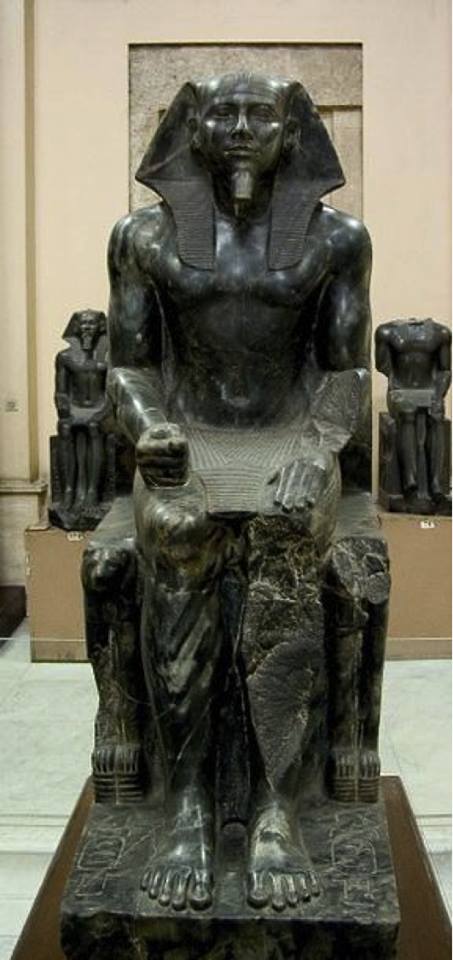 b
b
Statue of Kephren IVth dynasty. diorite; 1m 68 de ht., found in the pyramid's temple at Giza, Cairo.
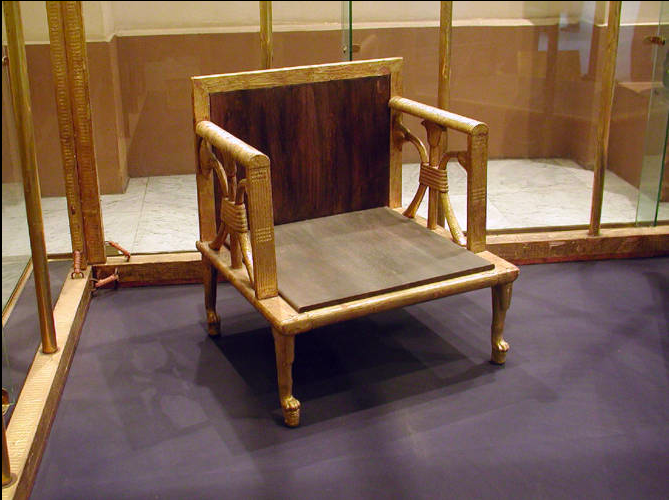
Armchair of the queen Hetepheres, wife of Snefrou and mother of Cheops.
gilded wood, found in her tomb at Giza; kept in Cairo.
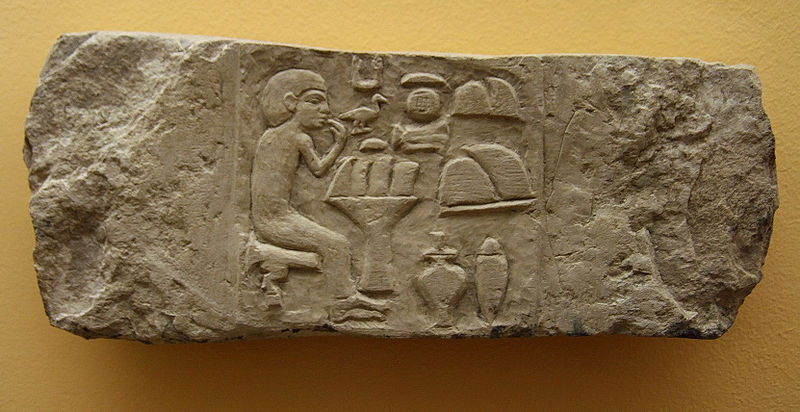
Stela in limestone, IInd dynasty ( thinite period) kept in Munich.
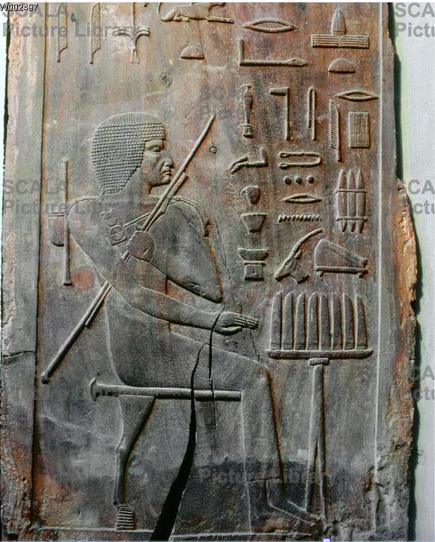
Pannel of wood representing the médecin et chief of dentists, Hesirê (IIIrd dynasty) found in his tomb at Saqqara and kept in Cairo (1m 14 de Ht et 40 cm de large).
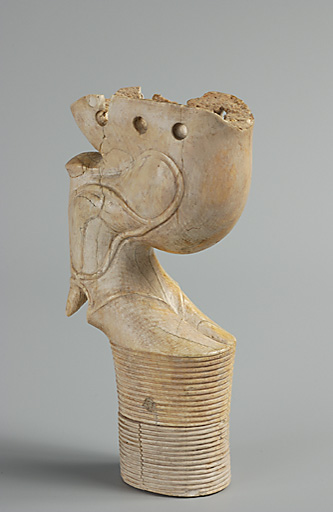
furniture's foot in ivoiry in form of bull's hoof ; thinite period. Ht. 16 cm.
Paris, Musée du Louvre.
Last edited: 24/05/2021
Add a comment



